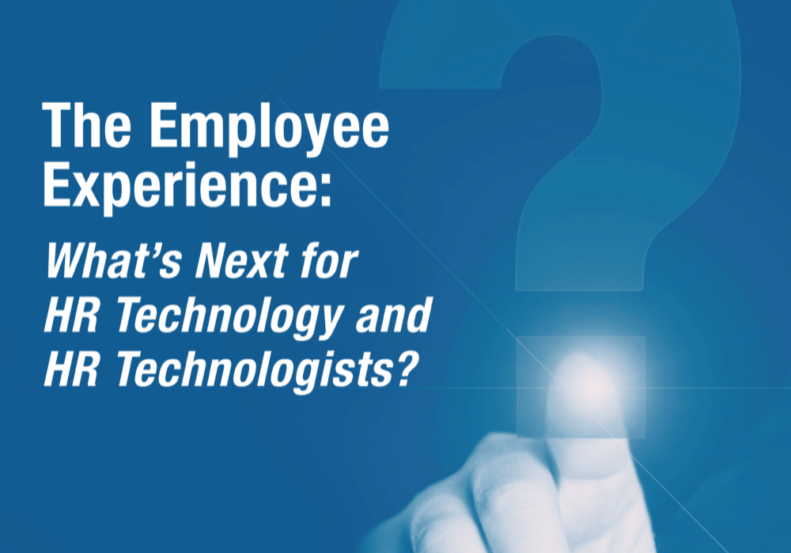When you join a new company as the head of People Solutions, HR Operations, HRIS and Analytics, or any other related titles, it is, most of the time, to initiate or rejuvenate a digital transformation desperately needed to lift the HR function to a new and necessary height.
Each time, I joined a new company, I experienced one of those scenarios: “We need to lead the deployment of this new solution”, or “We chose to deploy XYZ solution, we faced major setbacks and need to re-implement it” or “We grew quickly and our HR infrastructure does not reflect what we need in order to sustain that growth” or “as a spin-off, we inherited a set of HR systems that are not anymore a good match with our needs and size”.
I bet you experienced comparable situations. You come and face such a challenge. How to address it? What are the steps you could take to lead this transformation? What are the key success factors that you should consider as you build your transformation strategy and action plan?
We will look successively, in this article, at six key ingredients to success:
- Understanding the current situation.
- Relationship management.
- Short-term wins.
- Investment planning.
- Portfolio and project management.
- Retooling.
Understanding the Current Situation
How to manage your onboarding process? You may think that a few weeks could allow you to get the understanding needed to lead your team. That is not true. The field of HR is complex, and so must already be the set of processes and systems already implemented. Take your time to understand, at a deep level, who is doing what within your team, but also, who is doing what across the HR function, what works well for them, what their frustrations are and what they may expect from you. This may take you months and not weeks, but that does not mean that you should be passive, only listening to others during that time. We will see later that you should, in parallel, build your credibility through short term wins.
Back to this critical step: Use the HR Business Partners (HRBPs) to get an understanding of the dynamics of the businesses/organizations they do support. They will let you know what the Key Success Factors (KSFs) for each are, and the specific programs that they have deployed to support those. You may identify through those interviews, tensions existing between corporate program owners, such as Total Rewards, Talent Acquisition, Learning and Organizational Effectiveness, or DE&I, and HRBPs, corporate functions wanting to roll out global programs, and HRBPs asking that geographical or organizational differences be acknowledged and reflected in the definition of those programs.
Look at how decisions are being taken, and what criteria are used to judge whether specific requests are considered a high priority or not. For example, I have always paid specific attention to geographical differences and how regional needs are identified and ranked. Let’s take a company where a substantial percentage of employees are in the US with a growing base in EMEA and APAC. Are you designing first for the US and ex- tending those solutions for EMEA and APAC? I can guarantee that your employees in EMEA and APAC would want to know.
Why is it so critical to listen first, ask questions and learn from as many people as possible?
- As you just joined, you are not tinted, and folks will share with you what they think will be of value to you and your future success in the company. You will get a snapshot of the existing situation like you will not be able to get in the future as your actions are anticipated but have not yet materialized.
- You are establishing yourself within the HR function. Those initial contacts, the openness with which you are leading those interviews, the questions you will ask, will give to all a first impression that you, hopefully, will be able to capitalize on. This is the first step to- wards building strong relationships. We will come back on this later.
- Finally, this will allow you to establish an initial diagnostic of the current situation, understand what works well, what is broken or on the verge of being broken, and what critical gaps should be covered with new solutions.
Relationship Management
You are a leader. What is expected of you is not only to be a solid People Manager, and, for that matter, also a solid Project/Program Manager, but also to be the voice of your team, to identify and manage the critical relationships needed for your team to be successful.
As a service organization within HR, HRIS or HR Solutions/Operations teams must connect with internal and external partners. Even the most mundane tasks such as system administration or system maintenance, require synchronization with others.
Look at three types of partners to organize your thoughts on this topic:
- What are the teams I need to connect within the HR functions? These are your first customers. You need to know everything about them, share what you are doing for them and think creatively with them about the future.
- What are the key functions I need to connect with within the company? Usually, your list will include IT (frequent partner for your projects), Finance (planning, budget, HC management, payroll), Legal (compliance, policies, ER), and Corporate Communication as prime partners, and other functions, such as procurement or facilities, as secondary partners.
- What are the external partners required for success? This would obviously be the vendors of current implemented solutions (list that you may extend by deploying new solutions), but also consulting resources, and network- ing resources.
For each type of partner, define how you want to manage relationships.
There may be a culture of 1:1s to manage relationships within your company. As you get introduced, folks may approach you and schedule 1:1s to keep the relationship open. Be proactive. Each time you close an interview with someone as part of your onboarding, ask at which frequency they think you should meet and schedule follow- up meetings accordingly. Be ready for a template agenda for those meetings. They must be “take and give” meetings, meaning that you should be ready to share and listen (as should the other): what is going on both sides and is relevant to the relationship?
Do not stop at meeting with the “head of.” Meet with as many layers of authority for each partner as make sense so that you can under- stand what is going on and make sure that the work of your team meets their expectations.
Externally, set up a regular cadence to meet with your key vendors and keep the relation- ships with other vendors active so that you can easily reach out to anyone of them for support. With your key vendors, you need to understand who your account representative is and what the escalation path is. You need also to adhere to and be active on their community of customers.
To augment your team, think about having an open engagement with a consulting firm, or a couple of them depending on the technologies you do support. There are a lot of great medium size consulting firms that will offer you either the skills that your team does not possess or need more of.
To conclude this section, find networking opportunities. It could be by attending conferences (even if, with online conferences, networking is not as easy). It could be through formal discus- sion forums, or informal contacts, but being able to leverage what others have done, and share what you have is invaluable.
Short Term Wins
Now, here we are. You are beginning to understand the current situation and build relationships, and you want to begin to make your marks, have some wins. Through the interviews you did, you may have identified a few areas that could be improved; I am thinking about projects that can be addressed within a reasonable amount of time and make a difference.
For example, clarify roles and build forms to capture the information needed to process internal transfers, simplify the notifications sent at the completion of transactions, create an onboarding site to improve the relationship with future employees and automate the data trans- mission between your ATS and your HRMS, or re-design your internal career site.
Obviously, sometimes you will have to step in and address key issues right away, or launch a major initiative, but, if you can, try to identify and manage in parallel one of two quick wins to help establish yourself and your presence rapidly.
Sometimes, the relationship with another team or partner, internal or external partner, is not strong enough. You feel like the HRBP’s are not happy with how much administrative work is being pushed to them, or Finance does not have easy access to Headcount information, making budget discussions tedious, or IT does not have enough visibility on your portfolio of projects and tend to extend project timelines in consequence. Try to choose your quick wins to address more than one pain point at a time, combining, for example, the improvement of a process and addressing a tension with a partner.
Do not bite more than you can chew; just take one of two quick wins at most and focus your resources as much as you can on those; be mindful: use an approach that you would want to replicate to manage other quick wins. For example, use Design Thinking, or Co-Creation. By advertising your approach upfront, you will initiate a repeatable process, be able to set expectations and manage the involvement of partners at each step of this process.
During your first wins, involve as many people as needed. Do not hesitate to reach out as it will allow you to meet with folks that otherwise may not have given their time. By sharing your findings at the end of your investigation (the “See” step introduced above), you will already build the coalition needed to support the changes that will be rolled out when “scaling.”
Investment Planning
This is always a delicate phase. This is where you take your strategic hat and say: “We need to build a strategic roadmap for the investments that we need to make in People Technology to support the business strategy”, and its corollary “this will require the People organization to make choices, to say “no” to some “nice to have” initiatives but also to some “must-have” which will not be ranked as high as the “critical to have” ones.
During that exercise, each People function will have to be holistic and strategic. From looking at the initiatives in their own area, and rank-ing them one against the other, they will have to rank them against the initiatives of the other people functions and against corporate objectives. That is where you may realize that your wellbeing initiatives may not rank as high next year as the establishment of a Talent Market- place, or that Compensation needs an overhaul to stay competitive and would supersede everything else, or that a Candidate Relationship Management (CRM) system would be more critical to deploy than a Learning Experience Platform (LXP).
Because, at the end of the day, the People Technology strategy will have to be vetted at distinct levels within your company, you need to make sure that it is built with your key partners in mind and that your CHRO is on board to sell it to the executive team. It will take a village to get it defined, approved and ready to be implemented, and you need to build your planning process around it.
The People team may already have the experience of such a prioritization process. If this is not the case, or if this is the case but the market for People Technology has evolved so quickly that an assessment of it is needed to make the right choices, I would recommend that you select an external partner to help you, a consulting firm that understands the HR Tech market and the HR function at large.
Securing the budget needed for this consult- ing engagement will already tell you about the readiness of the organization to engage in such exercise. This is where your networking could come handy. Get the examples of other companies that have done this exercise recently and how they did it. If you know about your competitors, share. They may be more advanced and could help you build your case.
Once this strategic roadmap is defined, make sure that it is revisited on a regular basis (twice a year?) to ensure continued support from all parties involved.
Portfolio and Project Management
Now, this is it. You have your plan, and it needs to be executed. But does that mean that you can ignore recurring initiatives such as Open Enrollment for benefits, the focal review process, the test, and release of new features of your main HRMS or other People systems, and focus on your strategic initiatives? No obviously. Then what? You need to manage the workload of your team using a Portfolio Management process.
What is this? Simply put, it is a principal place where you list all projects you have agreed to work on and track their status (for ex. Pending Review, Approved, Not Approved, Deferred, and Green, Yellow, Red).
As you build your strategic roadmap above, be cognizant of the resources needed to do “every- thing else” as the total budget that you will need should include both. Then, manage your portfolio of projects per type of initiatives. I would recommend that you distinguish, at least, between three major types of initiatives:
- Run the business
- Process improvement (quick wins)
- Transformational initiatives
“Run the business” would cover what you need to do to manage the existing environment and recurring processes; “Process Improvement” would cover the quick wins (I recommend that you institutionalize this type of initiatives, one or two per quarter); “Transformational Initiatives” would cover new major initiatives.
Each project should be managed using a Project Management methodology. We have seen that for “process Improvement” or “quick wins” initiatives, an equivalent of “See, Solve and Scale” could be adopted. For more complex or bigger initiatives, a more structured approach is required. Obviously, PM is a discipline by itself, so, we will just scratch the surface here, but do not hesitate to invest into PM (resources, processes, systems) to manage each initiative and keep all required parties up to their commitments.
Let me just emphasize one component of Project Management which is critical: Change Management. Whether you have a PMO or not, make sure that you have within your team a Change Management Lead or that you can partner with the Talent Management team within your People organization, with IT or with Corporate Communications to cover this critical aspect of Project management. As you know, Change Management is the number one reason projects fail.
Retooling
The last key ingredient of success that I would like to share with you here is “retooling.” In 2010, John Boudreau released a book called “Retooling HR”. This revolution still needs to be managed in many organizations and Boudreau’s purpose was broader than mine here, but you will have to figure out, for your team, how it needs to be “retooled.”
Here are the critical dimensions that you could consider upskilling your HR Operations team:
- Make sure that your team understands the People strategy and can speak to it,
- Hone on everyone’s technical skills,
- Develop the ability of each member to inter- act with others, listen carefully, and manage potential conflicts (Interpersonal Skills), and
- Ensure that your front-line employees, from experts to entry-level analysts, can function as advisors, as thought partners, managing actively relationships, and focusing on add- ing value.
Investing in those four dimensions will make your team strong, acting as peers to the other components of the People organization.
Conclusion
More than ever, technology is a key component of success for any People organization; it is the glue that binds everything together, or, if it is not managed well, could reinforce silos within the organization. So, how to manage it? Hope- fully the six key ingredients introduced to you in this article will help you structure and manage your HR Operations team and move the needle within your company. Please do not hesitate to reach out and share your experience or questions.



